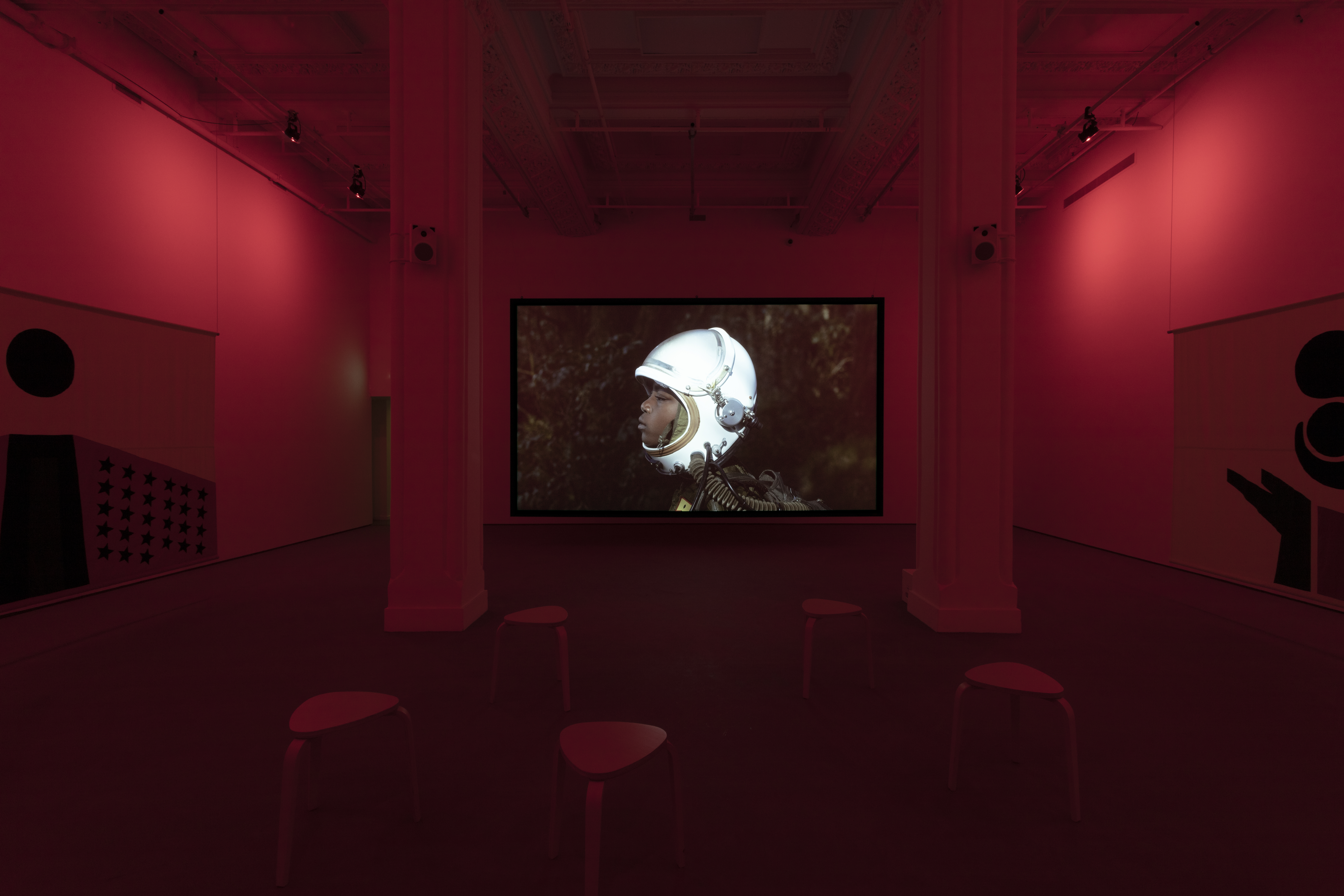The artist’s first solo exhibition in the Americas offers an immersive, thought-provoking experience for visitors
Early on a Thursday morning, I eagerly waited outside the PHI Foundation to see the new Larry Achiampong exhibition. The artist’s latest work, Relic Traveller, is a multidisciplinary exhibition that features sculptures, murals, four short films and more. Relic Traveller is the British-Ghanaian artist’s first major solo exhibition in the Americas.
Upon entering, Victoria Carrasco, one of the co-curators for the exhibition, led me through the first section. Carrasco explained to me that the relic traveller is a sort of alter ego for the artist, one that has allowed him to explore his African roots and to confront issues pertaining to race, postcolonialism and more. This exhibition, especially the films, also explores how some spaces appear to be reserved for certain individuals, namely europeans. This leaves the relic travellers to be in a constant state of movement as they attempt to find a home and to also find a place where they can leave a historical mark.
In a white-walled room with a red floor that had a clay-like texture to it, I observed seven black, faceless figures, all wearing similar navy green jumpsuits. Two of the figures were suspended from the ceiling, one with both arms positioned in front of them, and the other with one arm reaching out. Behind these figures on the wall were several flags, which closely resembled flags from existing African countries. In this room, visitors may feel as though they have been momentarily transported to space, with the two figures dangling above them, the space helmets these figures wear, and the red ground in the exhibition room bearing a striking resemblance to Mars’ sandy landscape.
The next room showcases the relic traveller in 2D form through colourful mural paintings. Achiampong utilizes every inch of this room to document the traveller’s journeys to what appears to be a land based in the future. Each wall, and even the ceiling, offers a visual narrative that can be appreciated.
The final room contained four short films, all featuring a breathtaking landscape in each one. This room was, without a doubt, the highlight of the exhibition for me. Sitting in a chair as overhead bright lights slowly dimmed to a deep red, I invested all my focus into the first film, titled Relic 0. This film follows the traveller as they wander through lush, green hills, and is Achiampong’s response to the prolonged period of time that the artist went without seeing his children due to the pandemic. In several of the films, the artist uses his two children as actors, both dressed as the relic traveller. The artist addresses his children directly, by sharing stories about their ancestry, but the film still resonates with all viewers. The pandemic presented the world with a novel form of isolation, one that won’t soon be forgotten, and this film is a stark reminder of that.
While this exhibition is deeply personal, it is also a meditation on current and past issues pertaining to race, diaspora, history and more. The pieces ask viewers to reflect on who gets to participate in the making of history, who and what deserves to be at the centre of ethnographic study, and how memories and cultural materials are (or aren’t) preserved throughout time. The very first exhibition, with its dangling mannequin-like figures, showcases a disturbance in the way ethnographic collections are presented. Typically, those who visit museums, especially ones in the West, will notice that ethnographic figures and even many objects are displayed vertically. Visitors who enter the first room will undoubtedly first notice the figures that appear upright, not the ones above them. I soon realized that the ones above head could easily be forgotten due to the fact that they do not presume the same position as the others, that they do not conform.
Additionally, in the films, the relic traveller is constantly moving, searching for a place to call home. All the while, they carry no materials with them. This makes it nearly impossible for them to leave a physical trace in history. Perhaps this is why the travellers rely so much on stories and memories, as emphasized during Relic 0 when the artist speaks to his children about ancestry. This exhibition is also, in many ways, a call to action for more Black voices to be acknowledged in cultural and historical discourses. These works highlight the racial inequalities that arise when it comes to documenting the physical and oral histories of individuals. Achiampong leaves visitors wondering, uneasily, who is worthy of being remembered?
Relic Traveller is on display at the PHI Foundation until January 9, 2022. For more information, please visit the Phi Foundation’s website.
Photo courtesy of Dahlia Cheng




